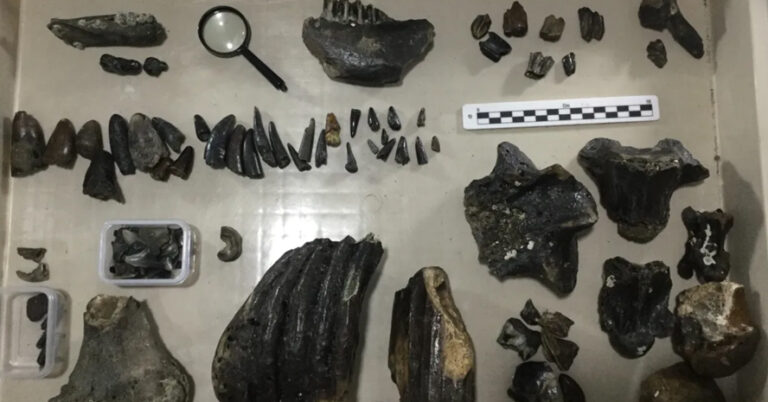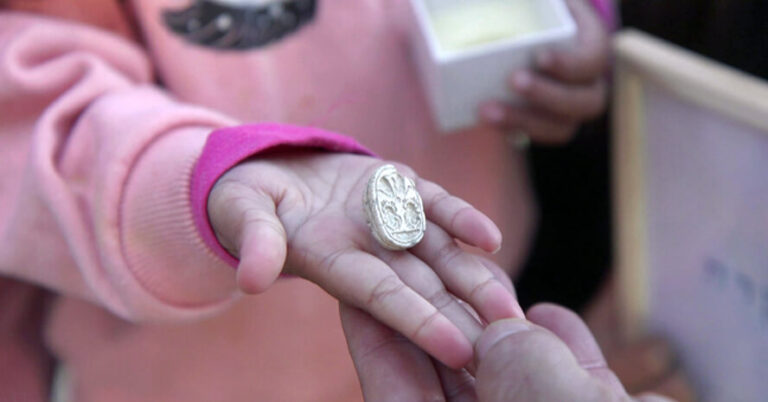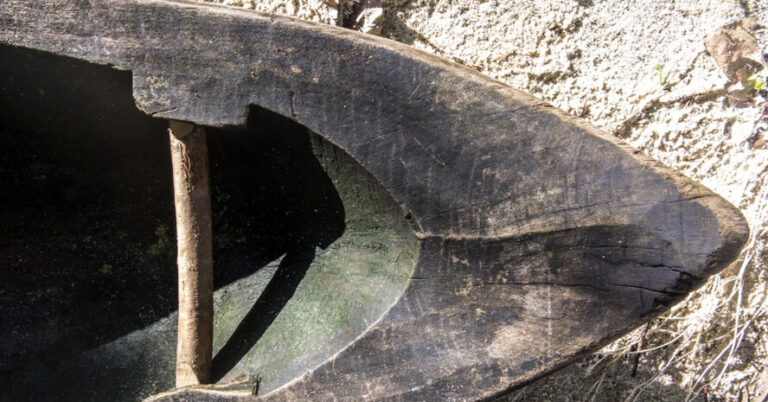In a quiet pasture in central Romania, a faint chirp from a metal detector cracked the silence. Beneath the sod, just a few inches below the surface, lay something untouched by human hands for over two thousand years: a shimmering collection of ancient silver jewelry, likely buried during a time of war, fear, or ritual.
And with that discovery, a small but meaningful piece of the past came back into view.
A Treasure Hidden in Plain Sight
Near the village of Breaza in Mureș County, a group of amateur metal detectorists uncovered a collection of silver ornaments buried just beneath the surface—simple objects at first glance, but rich with historical value.
Among the pieces were delicately made brooches, a bracelet with plant motifs, and a belt decorated with solar symbols—items that suggest not only status, but deeper cultural or spiritual meaning. What made this find truly fascinating wasn’t just the objects themselves, but what they hinted at.
These weren’t coins dropped in haste or tools left behind. These were deliberately buried treasures, likely part of a hoard meant to be reclaimed—only, no one ever returned.
That alone begs the question: Who buried them—and why didn’t they come back?
Echoes of the Dacians?
Scholars believe the artifacts could date back to the Dacian period, a time when a fierce Iron Age people lived in what is now Romania. The Dacians are known from both archaeological remains and the ancient writings of the Romans—especially the accounts of their conquest under Emperor Trajan around 106 CE.
Most of what we know about the Dacians comes from Roman sources like Trajan’s Column, which visually depicts the Dacian Wars. But Roman records are biased, portraying Dacians as either noble savages or fierce enemies. Discoveries like this bypass those filters and offer a rare, unedited glimpse into their lives.
Yet much about Dacian life remains cloaked in mystery. They had no writing system of their own, so we see them only through the distorted lens of their conquerors. Finds like this are among the only direct insights we have into their culture—and these particular pieces suggest something ritualistic, perhaps even sacred.
Some think the hoard may have been part of a protective burial, offerings to underworld gods or a desperate plea for safety during turbulent times.
Many archaeologists believe Iron Age hoards were buried to protect communities during times of threat—not just from invaders, but also from spiritual forces. Some were possibly never meant to be recovered, intended as offerings to underworld deities or ancestors.
Others argue it was hidden in a hurry, never reclaimed because its owner met an untimely end.

The Strange Silence of Ancient Silver
Silver doesn’t shine as brightly as gold, but it holds stories just as well. It tarnishes, but it lasts—preserving each toolmark and engraving left by ancient hands. These silver pieces are more than just decoration. They’re a direct link to people who lived long before us, yet made things meant to last.
Imagine fastening a brooch last worn when Roman legions were marching eastward, when myths still mingled with maps, and when the line between ritual and reality was razor-thin.
That’s not just archaeology. That’s time travel.
Metal Detecting and the Ethics of Discovery
The treasure was found legally and reported properly under Romania’s laws—though not all such finds are. Metal detecting has become really popular across Eastern Europe in recent years. And while many people get into it out of curiosity or a love of history, it’s also raised some tough questions. Some finds end up in private collections or sold off without ever being properly recorded—meaning we lose the bigger picture of where they came from and what they might tell us.
But when handled correctly, as in this case, their work can lead to meaningful collaboration between locals and archaeologists—and help shed light on histories that otherwise would remain underground.
Why These Finds Still Leave Us Asking Questions
Even now, after examination and dating, the legacy buried beneath Breaza doesn’t give up its full story. There are no names etched into the metal. No written records. No accompanying tools or burial remains. We don’t know if the jewelry belonged to a noblewoman, a priestess, or a chieftain. We don’t even know if it was meant as a gift, a curse, or a safeguard.
But maybe that’s the most honest reflection of the world it came from.
After all, the Dacians believed in mystery. In veiled rituals and sacred knowledge passed by word of mouth. And perhaps, just perhaps, that silence is part of what makes their relics so powerful now.
They speak to us—but only in riddles.

How Many More Treasures Sleep Beneath Our Feet?
This discovery isn’t an isolated case. In fact, Romania has seen several similar finds in recent years. In one case, a man in southern Romania came across nearly 1,500 ancient Roman silver coins while using a metal detector on a walk. The coins had been buried for about 2,000 years and were carefully documented before being turned over to local authorities.
Finds like that—and the silver jewelry near Breaza—show how much of the past is still buried across the region. Not in far-off dig sites, but in ordinary fields and farmland, where everyday people sometimes uncover pieces of history by chance.
Discoveries like this give us a glimpse into how people lived before us. Different time, different circumstances, but when you look at what they left behind, you can see we’re not so different after all.




